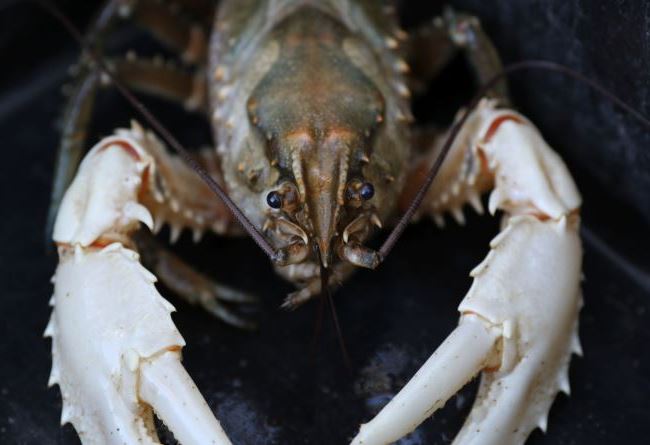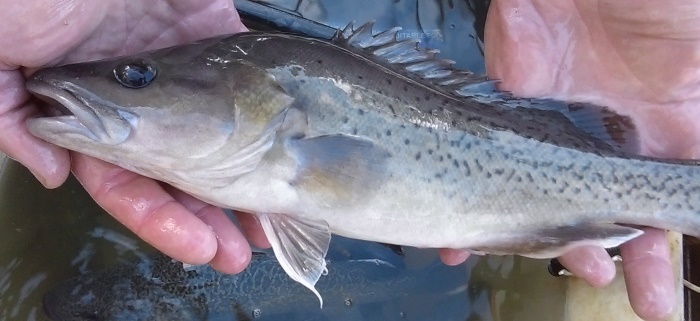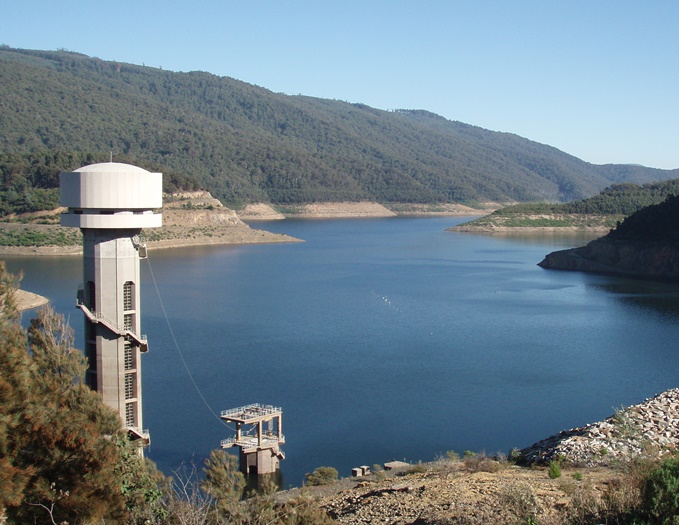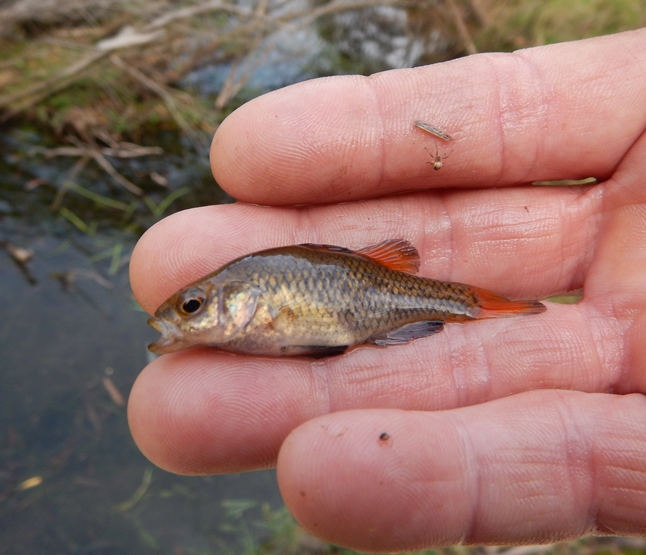ARI has been developing population models for aquatic species for many years which have contributed to assessing their conservation status and management options. Models have helped us understand how fish populations may respond to various situations including changes to waterway infrastructure (such as reservoirs), changes to water flows (seasonal or planned water releases) and species translocations. They have also helped predict how management options may impact on processes such as breeding success and rates of predation.
See below for examples of how ARI fish population models have assisted in natural resource management. Related journal articles are included for further information.
For more information contact: charles.todd@delwp.vic.gov.au
Reservoir management
A population model was developed to examine the impacts of reservoir expansion on the threatened Two-spined Blackfish. This work found that the species was vulnerable to likely loss of breeding habitat, particularly if the species was not able to spawn once the reservoir area was enlarged. However, if the expansion result in other riverine habitat being available for spawning then the impact of the loss of habitat within the reservoir would be reduced. Possible impacts on this species from introduced trout predation were also explored. The model tested various trout growth rates and found that if the growth rate was high, Two-spined Blackfish was particularly vulnerable to low level predation.
Work is currently underway to develop a model for the world’s oldest vertebrate - the Australian Lungfish. This will assist the management of populations of this endangered species in the reservoirs and rivers downstream in south-eastern Queensland.
- Todd, C.R., Lintermans, M., Raymond, S. and Ryall, J. (2017) Assessing the impacts of reservoir expansion using a population model for a threatened riverine fish. Ecological Indicators 80:204-214
Small fish species
A population model was developed for the Southern Pygmy Perch to assess the viability of a population in NSW where very few populations still occur. This small species generally occurs in small, often isolated populations in a variety of habitats. It is vulnerable to drought, habitat loss and fragmentation, and predation. The model found the oldest age classes had the highest reproductive value: identifying that large old fertile fish are particularly valuable in sustaining natural populations. When exploring species persistence scenarios, the model found that if in a stable habitat, a population of about 2000 female adults would likely be viable and able to withstand some disturbance. Such a population could possibly be used as a source for reintroductions elsewhere, an option often considered for fish that have significantly declined.
This information can be applied when considering how to achieve conservation aims for this and other similar species, such as increasing numbers and the viability of populations.
- Todd, C.R., Koehn, J.D., Pearce, L., Dodd, L., Humphries, P. and Morrongiello, J.R. (2017) Forgotten fishes: what is the future for small threatened freshwater fish? Population risk assessment for southern pygmy perch, Nannoperca australis. Aquatic Conservation 27(6): 1290-1300
Murray Crayfish
Murray Crayfish (Euastacus armatus), a threatened species popular in recreational fishing, has experienced recent declines in distribution and abundance. It is long lived (25+ years), very slow growing, has limited mobility and reproductive output, and matures at 8-9 years.
The species is vulnerable to overfishing and ‘blackwater’ events during flooding which result in extremely low levels of oxygen in the water. Fisheries regulations for Murray Crayfish include a restricted harvest season, closures for regions, a bag limit, a harvestable length limit and a ban on possessing egg bearing females, to help counterbalance the possible effects of overharvesting.

A population model was developed to examine the risk of harvest pressure and blackwater events. This model found the risk of decline would increase if an increase in fishing was combined with low frequencies of blackwater disturbance. Recent changes to legal harvesting limits to a ‘slot size’ in occipital carapace length of 10-12cm was also tested by the model, which indicated that this had been a suitable protection measure, as more females are expected to be protected.
- Todd, C.R., Whiterod, N., Raymond, S.M.C., Zukowski, S., Asmus, M. and Todd, M.J. (2018) Integrating fishing and conservation in a risk framework: a stochastic population model to guide the proactive management of a threatened freshwater crayfish. Aquatic Conservation 28(4): 954-968
Further work aimed at improving the assessment of the risk of harvest pressure identified a new indicator of female reproductive state called ‘size at functional reproduction’ (SFR). This was based on the relationship between the size of a female and the likelihood of the presence of eggs. When compared with the currently used measurement - called ‘size at onset of maturity’ (SOM), it was found that SOM underestimated the risk of harvest pressure. The difference between the two indicators became more pronounced with increasing harvest pressure, which indicates SOM is inadequate to characterise risk. There was also a large discrepancy in sex ratios (2:1, females to males) in catch data, evidence that female crayfish may be easier to catch rather than males. This suggests that using sex ratio as a measure of exploitation and recovery is problematic as it may not adequately reflect the effects of harvest pressure. Given the uncertainties surrounding a potential sex based differential encounter rate, we recommend the protection of all females from harvest.
- Raymond, S.M.C. and Todd, C.R. (2020) Assessing risks to threatened crayfish populations from sex-based harvesting and differential encounter rates: A new indicator for reproductive state. Ecological Indicators 118:106661
Creating a model that considers both fishing and conservation has enabled each of these often-conflicting aspects to be integrated into a flexible risk framework for this species. Importantly, fisher expectation can be managed by assessing the impact on harvest of potential changes to fishing regulations. The new indicator SFR can allow the rapid assessment of population reproductive output to help set regional harvest regulations. This approach is easily transferable to other threatened recreationally fished species.
For more information contact: scott.raymond@delwp.vic.gov.au
This short video titled 'Murray Crayfish surveys - protecting the world's second largest crayfish' (available on the DELWP YouTube channel) details how ARI and the Goulburn Broken Catchment Management Authority are tracking the recovery of this species. It can also be viewed below:
Management of water for the environment
Understanding how fish populations respond to flows is central to planning how best to deliver water for the environment. ARI has developed fish population models that include modelling a range of flow conditions to allow quick exploration of likely outcomes to these complex management scenarios. This will allow a comparison of different management options to maximise benefits to fish. Models are based on the latest knowledge and understanding of fish species' lifecycles and their ecological needs.
Population models have been developed for eight native species within the Murray-Darling Basin: Golden Perch, Silver Perch, Murray Cod, Trout Cod, Macquarie Perch, Southern Pygmy Perch, Olive Perchlet and Murray Hardyhead. The models incorporate options to assess other impacts such as catch by fishers, barriers to movement, habitat reduction or cold-water releases from dams.
A population model has also been developed for the introduced pest species Carp , to quantify how this species may respond to a variety of flow conditions.
Work is currently underway to develop a model for Estuary Perch to better manage environmental flows in the Snowy river, to assist the recovery of populations. This model considers the complex interactions between fish migrations, spawning, recruitment, flows and salinity and estuarine conditions.
Reintroduction of threatened species
Many population models have been developed to assist conservation efforts for a range of threatened fish. For example, the successful re-introduction of Trout Cod into the Ovens River was guided using a population model which indicated optimal age-classes for release. Fingerlings released into the river from 1997 to 2006 have contributed to what is now a thriving population.

A model developed for Macquarie Perch explored a variety of scenarios for translocation and provided useful insights into the age class, quantity of fish and timeframes likely required for successful establishment of new populations. It provides a distinct example of the benefits of conservation models in threatened species recovery. It also provides a basis for future modification of the model to investigate other aspects of Macquarie perch.
- Todd, C.R., Nicol, S.J. and Koehn, J.D. (2004) Density-dependence uncertainty in population models for the conservation management of trout cod, Maccullochella macquariensis. Ecological Modelling 171(4): 359-380
- Todd, C.R. and Lintermans, M. (2015) Who do you move? A stochastic population model to guide translocation strategies for an endangered freshwater fish in south-eastern Australia. Ecological Modelling 311: 63-72
Fishery management
When developing models for recreationally angled fish it is important that relevant stakeholders are involved in the process, and that models consider the impacts of fishing. For example, a population model for the threatened Murray Cod was developed with input from a range of managers, agencies and other stakeholders, such as recreational fishers, across the Murray-Darling Basin. Model development focussed on balancing conservation management, reducing population risks with fishery management and enhancing fisher harvest. The model identified that establishing a harvest slot length limit (HSLL) of 550-750mm, rather than a minimum legal limit, would provide a lower risk of species’ decline as well as greater catch rates for fishers. This work was part of a review of Murray Cod catch limits and led to the implementation of new fishing regulations for this species.
- Koehn, J.D. and Todd, C.R. (2012) Balancing conservation and recreational fishery objectives for a threatened fish species, the Murray cod, Maccullochella peelii. Fisheries Management and Ecology 19(5): 410-425
For more information see the Victorian Fisheries Authority website on Murray Cod catch limits for Victoria.
Page last updated: 22/09/25

